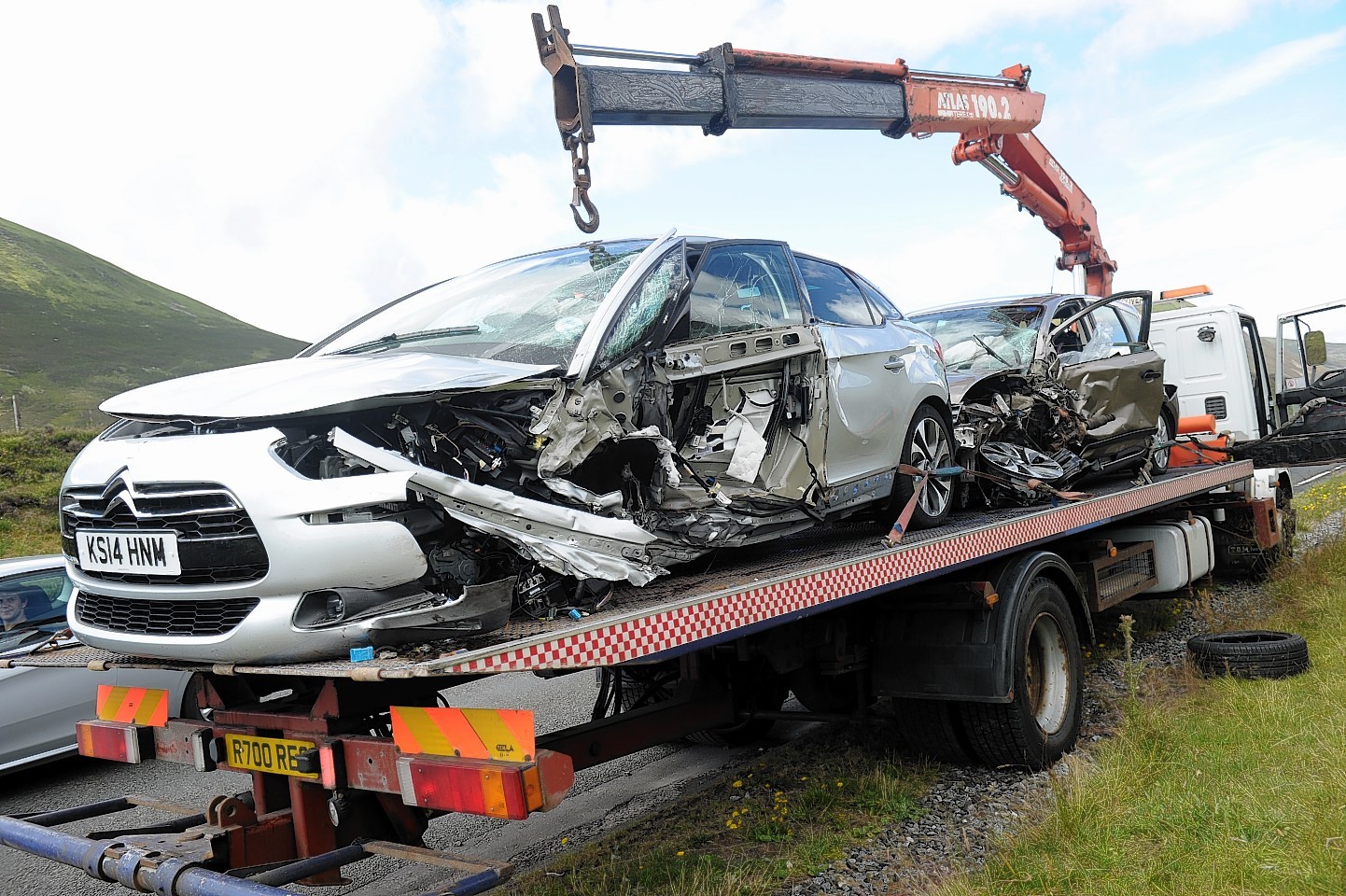A woman in her eighties was badly injured in a head-on crash on Scotland’s most notorious road.
But a family of four in the other car – believed to be on holiday from Europe – escaped without serious injury in the smash on the A9.
A police officer at the scene of the accident on the Inverness-Perth route described it as a “near-miss that could have been a lot worse”.
A third car was also involved, but the car suffered only minor damage and the driver was uninjured.
The collision happened beside a layby south of Balsporran Cottage B&B near Dalwhinnie, less than a mile from where the road merges into dual carriageway at the Drumochter Pass.
The accident scene is also close to the site of proposed average-speed cameras, which will track drivers along single carriageway sections.
Transport Scotland hopes the controversial devices will reduce the number of serious and fatal injuries on the route.
A police officer at the scene yesterday said that one of the drivers involved would be reported to the procurator fiscal.
The injured pensioner was a passenger in a light brown Nissan Note.
She was taken ambulance to Raigmore Hospital in Inverness after being cut free from the wreckage by firefighters.
It is understood she suffered serious but not life-threatening injuries.
Her husband, also in his eighties, went with her in the ambulance.
Five crews from Kingussie, Newtonmore and Aviemore went to the scene. An air ambulance was also called, but was not required.
The family of four were in a rented silver Citroen DS5, which spun of the road. The Nissan ended up in the centre of the carriageway.
Both vehicles were extensively damaged and the Citroen, which is believed to have been travelling north, ended up on the wrong side the road.
The A9 was closed in both directions for about an hour, but police managed to move Nissan to one side of the road to allow the northbound lane to reopen until a recovery vehicle arrived.
Traffic queued for up to four miles in both directions at one point.
Constable Howard Rose, of the Tayside road policing unit, said: “Someone will be getting reported for driving offences.
“All I can say is that this was a near-miss and it could have been a lot worse.”
Perthshire MSP Murdo Fraser expressed his concern yesterday about another serious accident happening on the A9.
He said: “This accident reinforces the case for the road to be made up to a dual carriageway and it needs to be done sooner rather than later.
“In addition to the impact on those directly affected there was once again considerable disruption and economic implications for the area as a result of the road closure.”
The crash also happened just two days after a German man was killed on the A87 Portree-Broadford road at Sconser on Skye.
The Scottish Government is installing 100 average-speed cameras along single carriageway sections of the 138-mile stretch of the A9 between Dunblane and Inverness, at a cost of £2.5million.
Full dualling of the route, which will cost £3billion, is expected to be completed by 2025.
A recent Transport Scotland survey revealed most drivers do not believe speed cameras will make the A9 safer
A study also showed that more than half the motorists using the road feared the devices would also lead to an increase in tailgating, as well as journey times and driver frustration.
Transport Minister Keith Brown believes the cameras will cut the accident rate, but the scheme has been criticised by politicians, business leaders and local campaigners.
